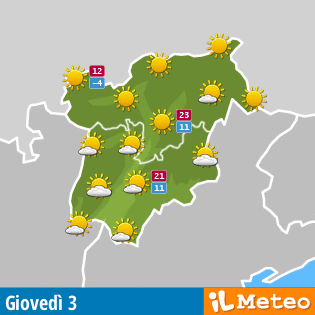The Ladino
The ancient language of the Dolomites
 |
| Italian |

Often, the Dolomites’ territory is called The Ladino (Ladin) and Ladini (Ladins) is the Dolomites’ people. This outlook of the Dolomiti Mountains is, in a certain way, wrong. In fact, even if it is true that Ladins are the very people of the Dolomites and that they live in the main part of the territory, it is even true, by a side, that many linguists does not consider Ladino as a true language and Ladins as a true people; but,on the other side, there are Dolomites’ places that are not Ladin and there are Ladins outside the Dolomites’ territory.
As regard the first sentence, it’s important to precise that there’s not a joint Ladin language: however the try to create a standard Ladin language, the SPELL project, is an artificial project and it involved the historic, or ex-Habsburg, Ladin territories only. But there are many Ladin dialects, sometimes very different by one another, so different that speakers from different valleys could not understand each other. Moreover linguists believe that Ladin dialects are actually northern Italian dialects, very old, which were present in a wider area and now are relegated in some insulated or more conservative places from the point of view of the traditions or language. So it’s possible to speak about Ladino as a language only as a group of dialects with archaic characteristics, various ones, not just one, that are not present in other dialects of the Alps or of the northern Italy.
The Ladino: more informations
Essentially The Ladino is a language born in modern age, nor as a tongue with an independent develop from Latin in stet of the nearer language, neither, as someone says, as a jam of Latin and Rhaetian languages. It is just a group of dialects with ancient features in which there aren’t characteristics totally unrelated to other language or words with an exclusive Ladin origin.To the fact that there are not-Ladin regions in the Dolomites’ area, it’s easy to note this to those that know the Dolomites’ territory and culture. For example: there are many German valleys in the Tyrolean Dolomites; in Val Belluna, Feltre, Alpago northern Venetian dialect are spoken, even if they are piedmont areas with Dolomite peaks. In the same way, there are zones in which people speaks Ladin outside the Dolomites: i.e. Romansch in Switzerland or Friulano, even spoken in plain zones.
In
ancient times The Ladino area was larger than today. The most part of
the Alps, many piedmont areas and plain zones were Ladin. Gradually the
Ladin area has been reduced, and so on today. So, in many places,
archaic Ladin linguistic characteristics are lost to vantage of
linguistic innovation and, in the same way, people have preferred to use
languages considered more impressive: German or Northern-Italian
dialects according to the zone of influence. About the matter of the
Ladin area was larger than the current one, this recognized thesis makes
insignificant the others that say Ladins people living in Mount Sella
area only, we could think about High Venosta Valley that was Ladin until
the first years of XIX century and than about Trieste where part of the
people spoke a Ladin dialect (Tergestino), similar to Friulano, till
XIX century too. Moreover there are many toponymic examples in
Northern-Venetian dialect area (Valbelluna and Feltre) and in Alto Adige
(South Tyrol).
